Our Projects
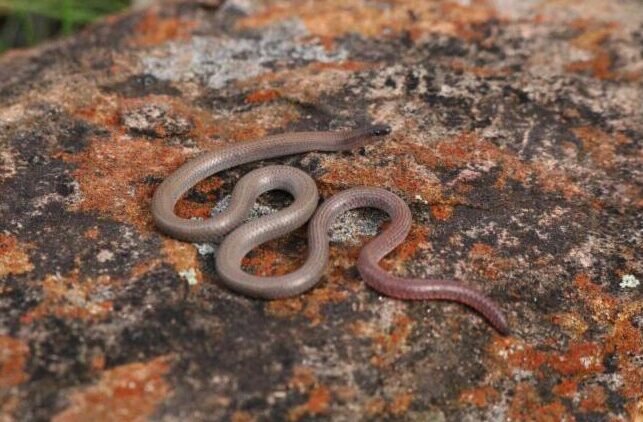
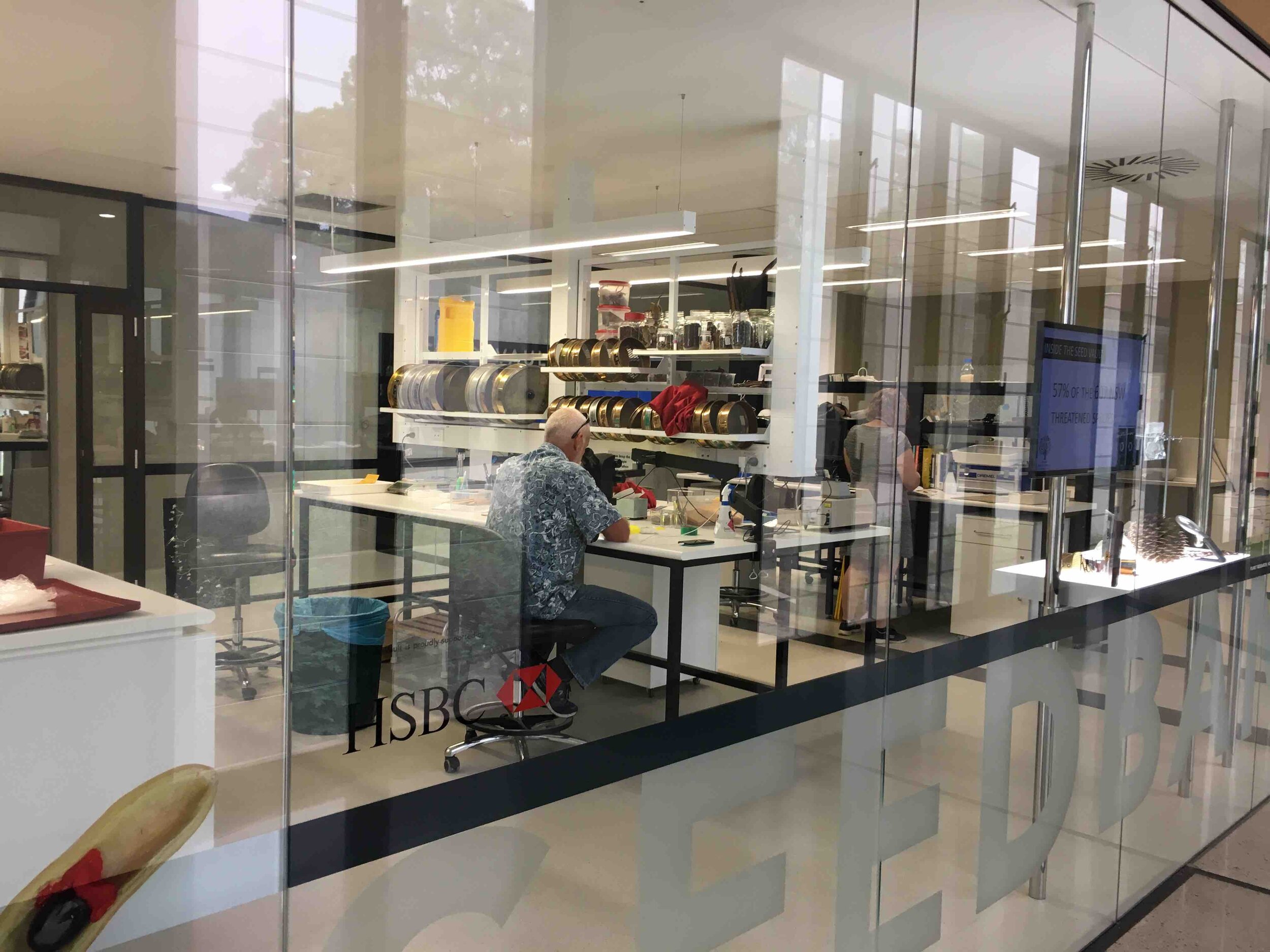
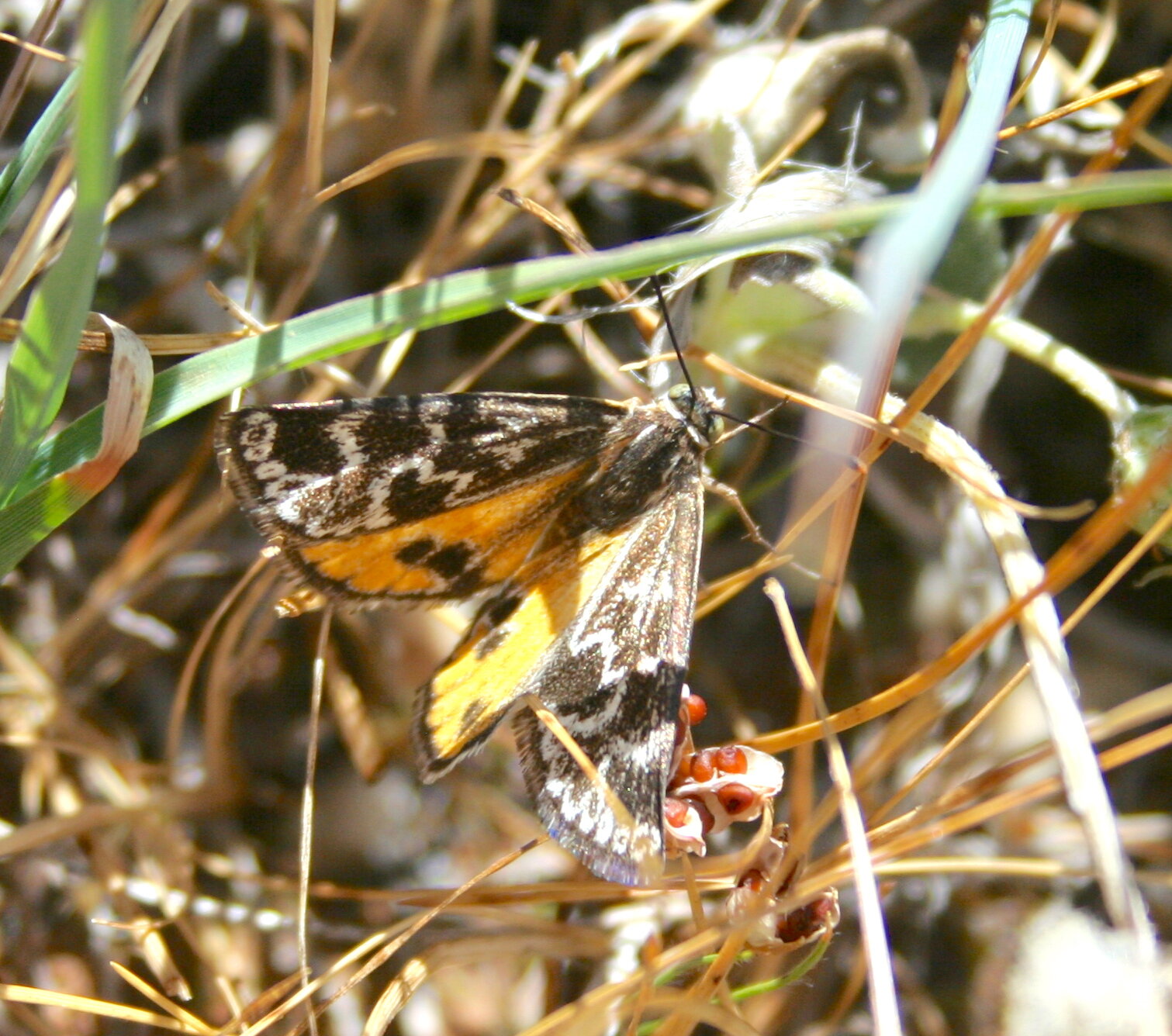
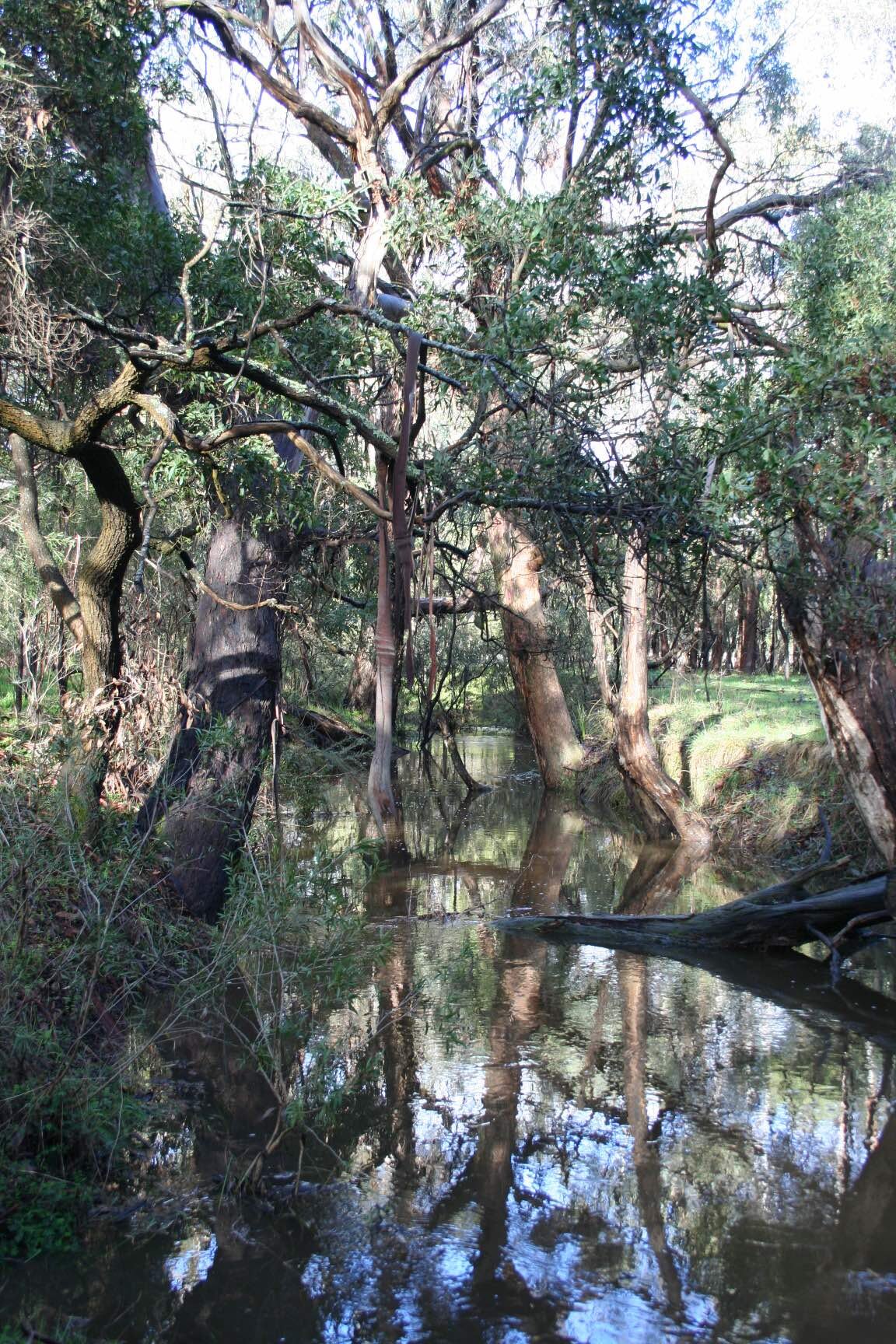
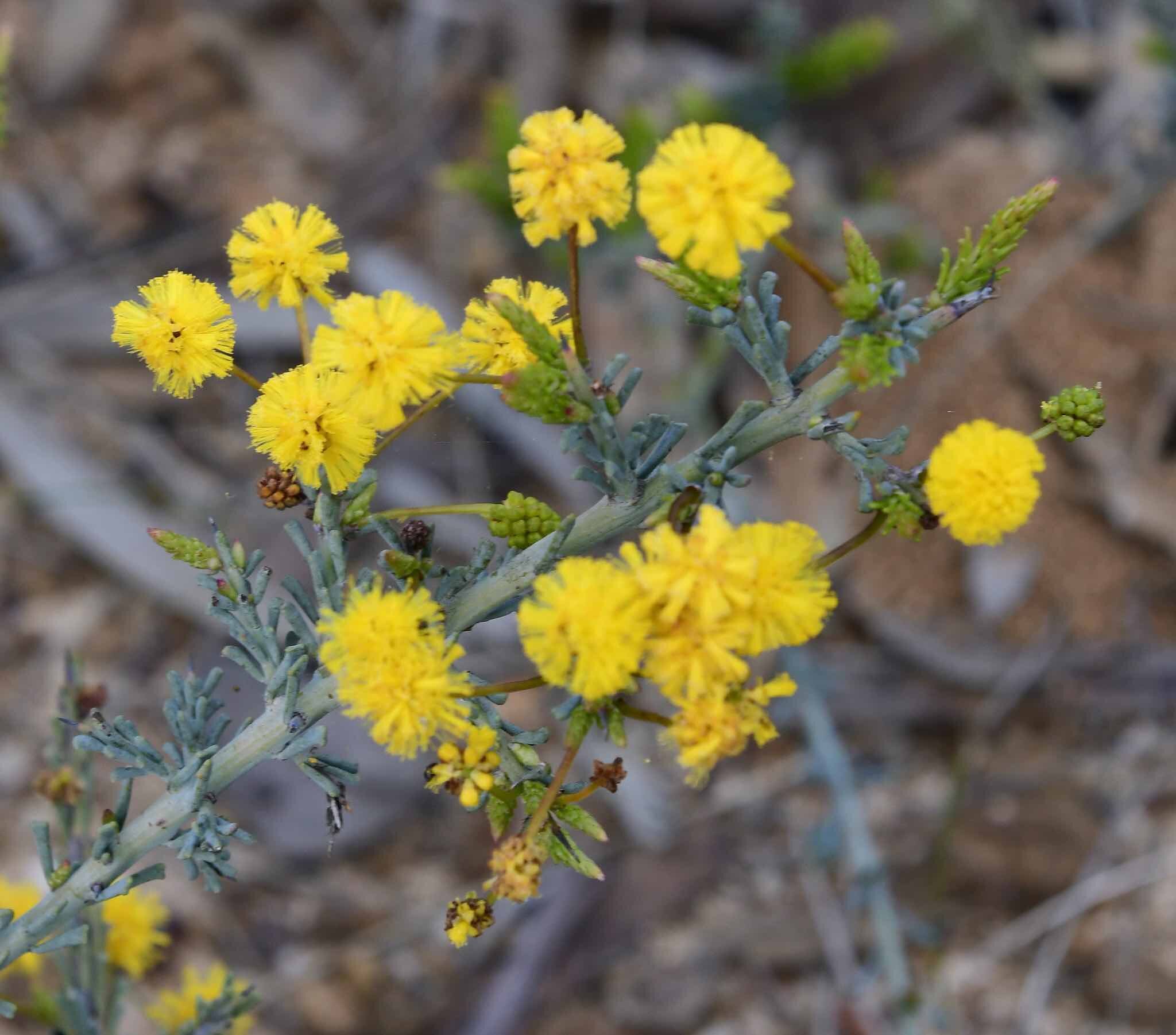
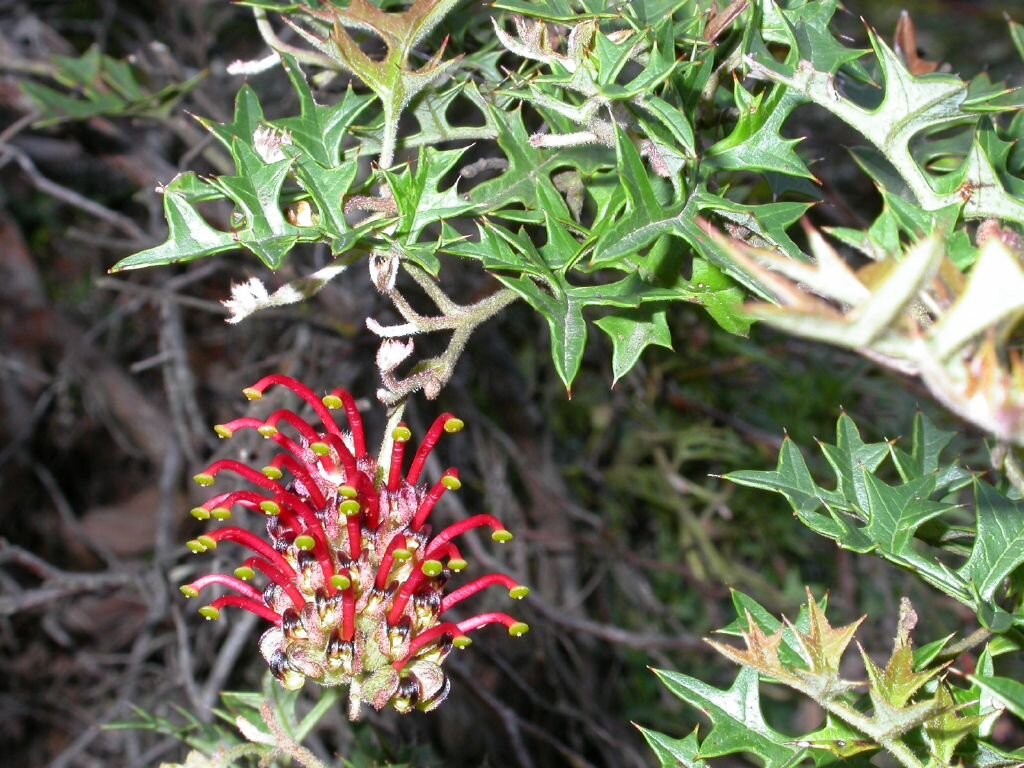
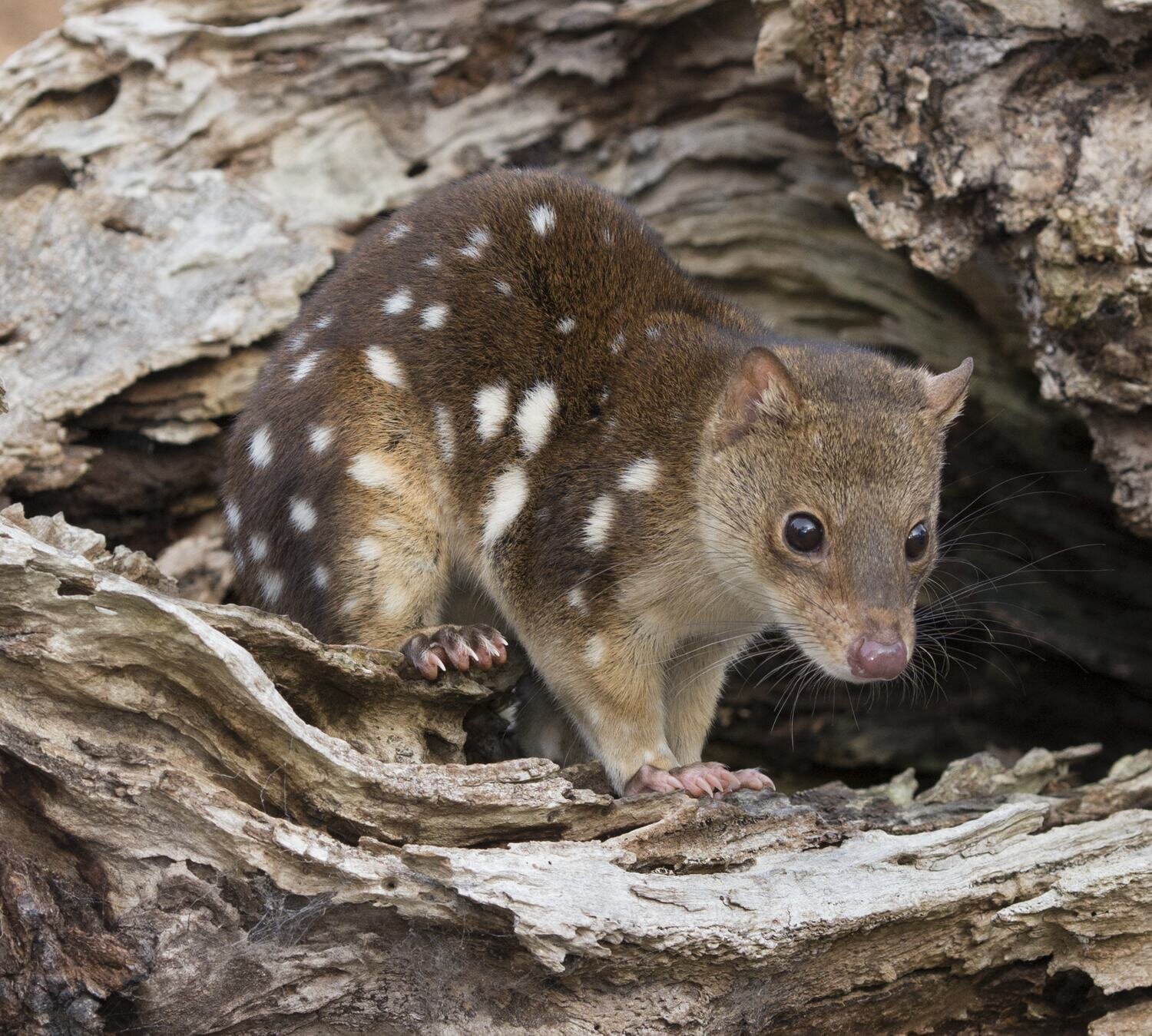
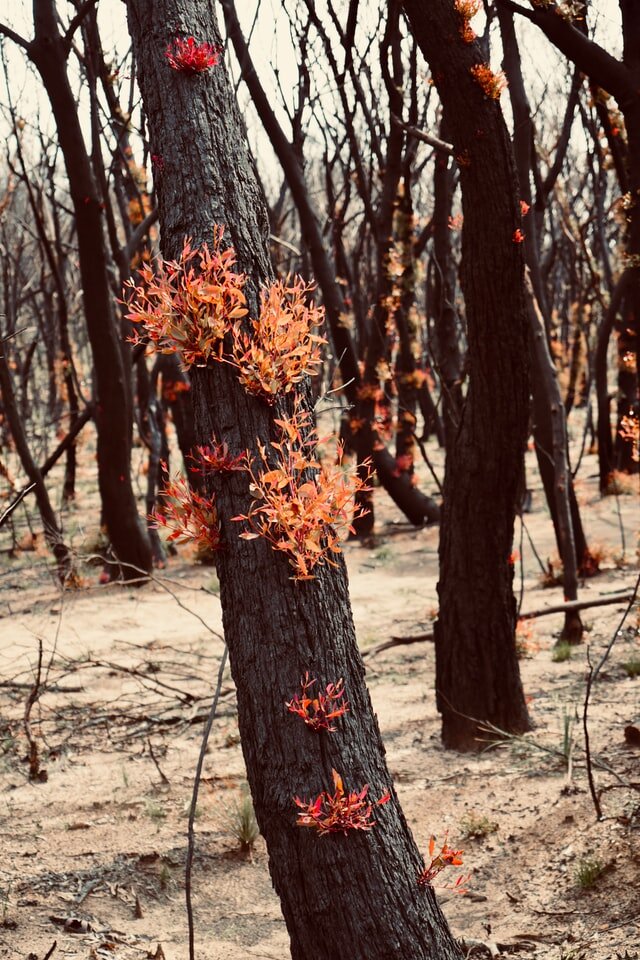
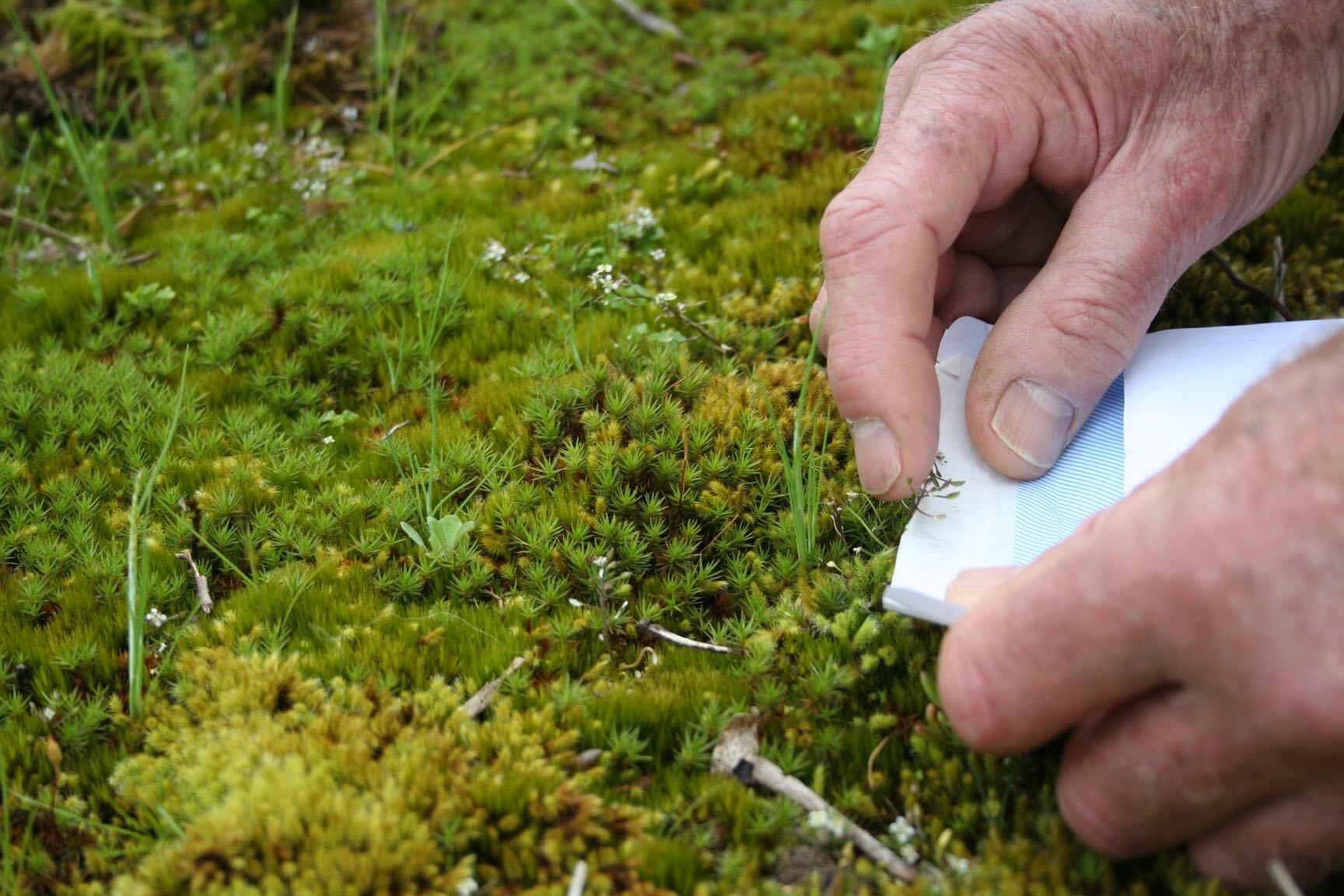





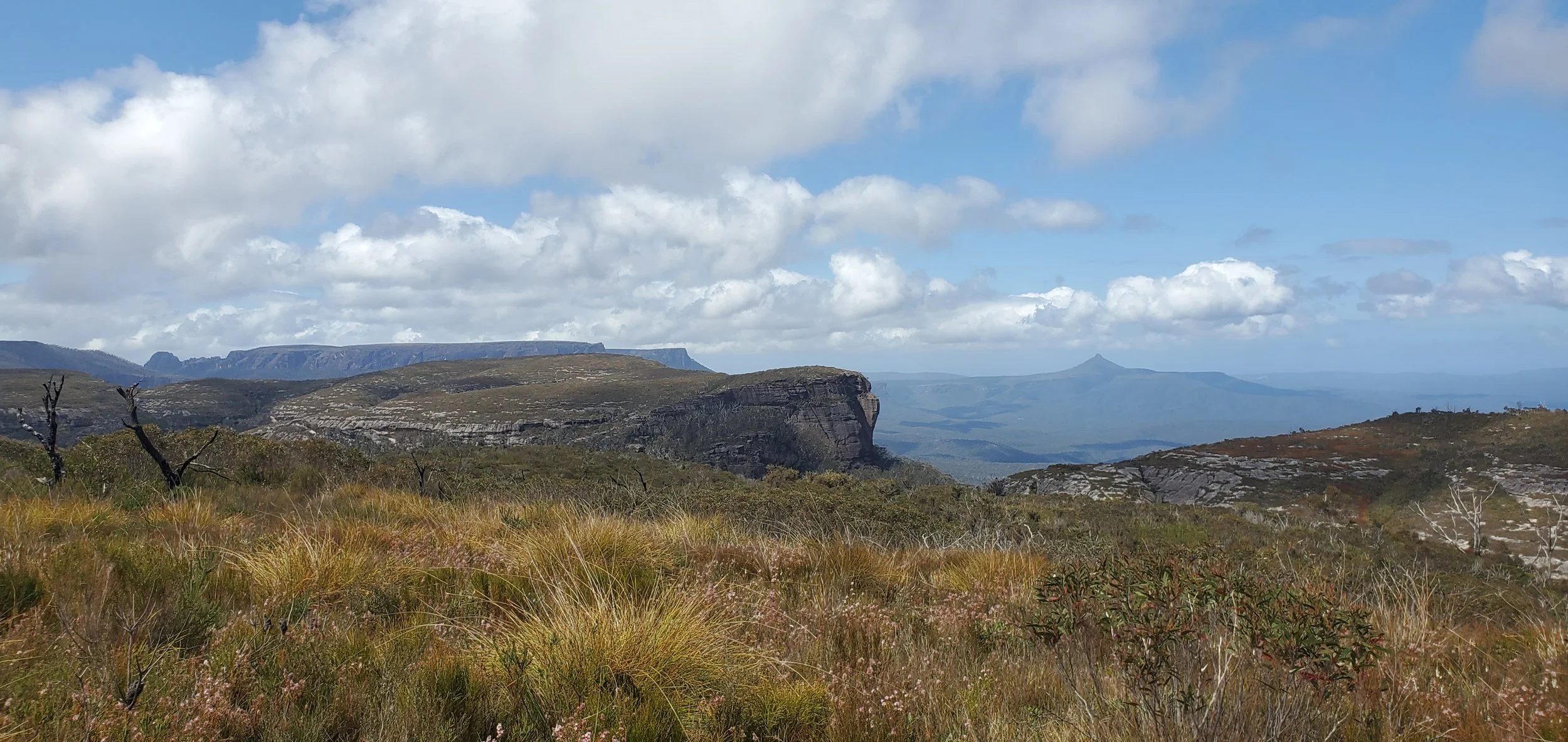
Saving the pink-tailed worm-lizard
Pink-tailed Worm-lizard, Aprasia parapulchella Photo credit: Damian Michael.
The Pink-tailed Worm-lizard (Aprasia parapulchella) is a fossorial (meaning it has adapted to burrowing in the ground) reptile known to only a small number of rocky outcrops in Victoria and is patchily distributed over a wide area in NSW from Albury to Gunnedah. The Pink-tailed Worm-lizard is very small (measuring up to 25 centimetres in length) and has only two small limb flaps instead of legs leading it to resemble a worm.
The Pink-tailed Worm-lizard is highly sensitive to environmental changes. In Victoria, the species is restricted to only one population in woodlands in the Bendigo region. This highly threatened population is surrounded by residential development which places it at great risk of extinction from domestic cats, fuel reduction burning and habitat degradation. More…
Rainforest Germplasm Conservation Program
Cool Temperate Rainforest in Victoria. Photo credit: Steve Bittinger @sbittinger.
Australia’s ancient rainforests are home to a diverse array of native plants and animals. Their moist, lush microclimates support a number of threatened flora and fauna including the Tall Astelia (Astelia australiana), Slender Tree Fern (Cyathea cunninghamii) and the Otway Black Snail (Victaphanta compacta). Rainforests were once more widespread across Victoria when the climate was cooler. Since that time, they have since retracted to cooler, wetter parts of the state. Climate change now poses one of the biggest threats to these ecosystems and large tracts have been lost to bushfires (particularly in 2019/20). These fragile and beautiful ecosystems are also heavily impacted by human activity such as timber harvesting, disease and land clearance.
The Rainforest Germplasm Conservation Program aims to collect rainforest seed and reproductive tissue (known as ‘germplasm’) for long term storage at the Royal Botanic Gardens Victoria and the Australian Plant Bank. Cryopreservation involves storing seeds at very low temperatures to maintain their viability. Due to their unique characteristics, rainforest seeds can be challenging to store in these cryogenic seedbanks. More…
monitoring butterfly community no. 1
Golden Sun Moth (female). @0ystercatcher CC BY-NC-SA 2.0.
Butterfly Community No. 1 is a unique ecological community comprising of a large number of threatened butterfly species, species including the Large Ant-blue (Acrodipsas brisbanensis cyrilus) and the Small Ant-blue (Acrodipsas myrmecophilia) butterflies which are listed under the Victorian Flora and Fauna Guarantee Act, 1989. The Mt Piper Nature Conservation Reserve is the only known location of this community in Australia. Consequently, this reserve is of very high ecological significance. The reserve also supports the Golden Sun Moth (Synemon plana) which is listed under the Federal Environment Protection and Biodiversity Conservation Act, 1999. More…
Black Gum Waterways Program
Black Gum on private land in Victoria.
Black Gum (Eucalyptus aggregata) is a threatened Eucalypt that grows in southern NSW and Victoria. This species is a ‘cool climate relict’ (having evolved in cooler, wetter times). Once more widespread across Victoria and NSW, Black Gum is found today in small populations and along creeks and in frost hollows on private agricultural land and public reserves.
In Victoria, Black Gum populations have retracted to the Macedon Ranges along the Five Mile and Slatey Creeks. Sadly, no intact Black Gum habitat remains and no populations are protected in conservation reserves. Most Black Gums are found on farmland or in council, rail or road reserves where they are subject to pressures from urbanisation or agriculture. Over the past 200 years, Black Gum habitat in Victoria has become heavily degraded due to widespread land clearance and the invasion of weeds including Willow (Salix sp.), Gorse (Ulex europaeus) and Blackberry (Rubus sp.). This iconic tree is also threatened by climate change, introgressive hybridisation and habitat loss and fragmentation. More…
Harrow Wattle Recovery Program
Harrow wattle (Acacia acanthoclada acanthoclada). Photo credit: Chris Clarke CC-BY-NC 4.0.
Harrow wattle (Acacia acanthoclada subsp. acanthoclada) is a threatened shrub, listed as Endangered under the NSW Biodiversity Conservation Act 2016. Harrow wattle is found on ridges and dunes in mallee vegetation in south western in New South Wales. It also occurs in Victoria, South Australia and Western Australia. In NSW, Harrow wattle is threatened by land clearance, overgrazing from goats, domestic stock, kangaroos and rabbits. Small populations are likely to be threatened by inbreeding depression and mate limitation. Consequently, many populations have declined dramatically and community action is urgently needed to recover the species.
The Rick Farley Soil Conservation Reserve (RFSCR), situated adjacent to Mungo National Park in south west NSW, once supported Harrow wattle. However, DPIE and the Traditional Owner group, Mothers Ancestral Guardians Indigenous Corporation (MAGIC) report that in recent years, wildfire, drought and heavy grazing by goats, kangaroos and rabbits has caused the extinction of the population. Ironically, the loss of native vegetation due to fire has made the site more accessible and suitable for fencing. As such, Rick Farley Soil Conservation Reserve is an ideal site for a Harrow Wattle translocation. More…
Langi Ghiran Grevillea recovery program
Langi Ghiran Grevillea (Grevillea montis-cole subsp. brevistyla). Photo credit: Neville Walsh, Royal Botanic Gardens Victoria.
The Langi Ghiran Grevillea (Grevillea montis-cole subspecies brevistyla) is a threatened shrub known only to Langi Ghiran State Park in the Victorian Pyrenees. Anecdotal records suggest that the Langi Ghiran Grevillea is at extreme risk of extinction. However, to date, no on ground works have been conducted to increase or stabilise the population.
Only 500 adult plants and 400 seedlings remain in the wild. This beautiful Grevillea is highly threatened by recreational activity, inappropriate fire regimes, herbivores, disease and climate change. More…
GREEN AND GOLDEN BELL FROG (Litoria aurea) SITE OCCUPANCY ANALYSIS
The GGBF is listed as ‘Endangered’ under the NSW Biodiversity Conservation Act 2016. Around 40 extant populations of GGBF occur within NSW, vastly less than the number that would have occurred prior to European settlement (White & Pyke 2008). Populations are generally isolated from one another, but each population typically consists of multiple sub-populations that occur across a spatially separated network of waterbodies (Hamer et al. 2008; Hamer & Mahony 2010).
When the individuals at sub-populations can move between the waterbodies, the connected population can be referred to as a metapopulation. Most NSW GGBF populations (or metapopulations) are continuing to decline, although recent evidence suggests that some populations may be stable, based on population size estimates (Goldingay et al. 2017).
To understand the current GGBF conservation status in NSW and management requirements, a landscape scale assessment is required to assess population trajectories and identify factors influencing population change. We have modelled adult and juvenile occupancy for GGBF and assessed additional potential factors driving the occupancy of GGBF compared with previous years, and subsequently determined key factors driving life-stage-specific GGBF occupancy, persistence and colonisation
SECURING FIRE AFFECTED FLORA IN NSW
Dense Cord-rush (Baloskion longipes) habitat in Kanangra Boyd National Park prior to the 2019/20 bushfires.
Australia is facing an extinction crisis. Climate change, habitat loss, invasive species and disease are putting our diverse and unique native plants and animals at risk. The 2019/20 bushfires that ravaged Queensland, New South Wales and Victoria have placed even more pressure on these species.
These were fires of unprecedented magnitude and severity that had widespread impacts on native ecosystems across the south-eastern States. In New South Wales, these losses were keenly felt, where well over 5.3 million hectares (6.7% of the State) were burnt. Of this, 37% of the State’s national parks and 42% of state forests were burnt. These bushfires were a wakeup call for many Australians, demonstrating the frightening consequences of a heating climate.
Widespread media coverage was given to the plight of the millions of animals that tragically perished or were injured. However, little attention was focused on the plight of the thousands of native plant impacted by the fires. Some Australian plants have evolved to survive fire. However, many others that occupy cooler, wetter environments have not, and are particularly at risk from fire. Climate change is increasing the frequency and severity of bushfires creating ‘megafires’ and placing more and more species at risk of extinction. In addition, human-induced threats (such as grazing by introduced animals) can have secondary, catastrophic post-fire impacts on threatened plant populations, driving many species towards extinction.
Translocation is an important component of threatened flora recovery that establishes new, or supplements existing populations to prevent extinction. Translocation is the deliberate movement of native plants or animals from one location to another. The first step is the collection of seed and plant reproductive tissue (plant germplasm). It is used by threatened species ecologists in times when plant populations are critically low, or threatening processes in the wild are unable to be mitigated (such as the increasing frequency and severity of bushfire). More…
Safeguarding the future of the southern shepherd’s purse
The Southern Shepherd’s Purse (Ballantinia antipoda) is a tiny, annual plant that is only found in south–eastern Australia. The Southern Shepherd’s Purse grows in moss mats among a range of tiny native species on the top of a mountain in Central Victoria. Sadly, the species been lost from all previously known populations in Victoria and Tasmania. The Southern Shepherd’s Purse is one of Australia’s rarest plant species and faces imminent extinction.
The Southern Shepherd’s Purse is primarily threatened by increased temperatures and decreased rainfall associated with climate change. Damage to moss mats by introduced animals such as pigs and rabbits also place populations at risk. Invasive weeds also outcompete this tiny plant for light and moisture, making its habitat unsuitable and leading to population declines. More…
Saving Ant-blue Butterflies Across Victoria
Little is known about the distribution and population status of the elusive ant-blue butterflies. (Photo: Gareth Pellas)
This project has established a recovery program for Victoria’s endangered blue butterflies - The Small Ant-blue (Acrodipsa myrmecophila) and the Large Ant-blue Butterfly (Acrodipsas brisbanensis). Ant-blue butterflies have a mutual relationship with coconut ants (Papyrius sp.) whereby the ants look after the young caterpillars and feed them and in return receive a sweet secreted substance.
During this project we have trained community members and volunteers in coconut ant nest and butterfly identification to assist in surveying historic records across Victoria and locating breeding populations. We have established a Scientific Advisory Group of experts, community and land managers to guide the species recovery and draft Action Statements.
MULTI-SPECIES THREATENED BUTTERFLIES IN FIRE EFFECTED REGIONS OF EAST GIPPSLAND
The 2019-20 bushfires of eastern and southern Australia had severe impacts on Australian flora and fauna. As many threatened butterfly species have very localised ranges and unique habitat requirements such as specific host plants and ant associations, it is likely that the fires in Far East Gippsland severely impacted seven threatened butterfly species; the Southern Sedge-darter Telicota eurychlora - FFG listed (Vulnerable), Large Ant-blue Acrodipsas brisbanensis - FFG listed (Endangered), Orange-ringlet Hypocysta adiante - FFG listed (regionally extinct), Silky Hairstreak Pseudalmenus chlorinda fisheri - (Vulnerable), Chequered Sedge-skipper Hesperilla mastersi mastersi - (Data deficient), Two-spotted Grass-skipper Pasma tasmanica - (Vulnerable) and the Common Pencilled-blue Eirmocides absimilis - (Data deficient).
To assess the extent of population loss, provide a baseline for ongoing monitoring and provide advice on the recovery of seven threatened butterflies, we undertook over 200 surveys to establish the extent of population loss, provide a baseline for ongoing monitoring and provide advice on the recovery of the seven threatened butterflies ensuring our data is accessible
Found 4/7 Species; The Large Ant-Blue (not seen since 2003 locally), Masters Skipper (not seen since 2012), Common Pencilled Blue (not seen since 2004 and the Two-Spotted Grass Skipper* (not seen since 2012 locally). We have drafted two Action Statements to guide the species recovery going forward and made recommendations to land managers regarding future conservation and threat mitigation strategies.
PROTECTING OUR FORGOTTEN FLORA: GRAMPIANS THREATENED FLORA RECOVERY PROGRAM
The Grampians Globe-pea (Sphaerolobium acanthos) is critically endangered and at risk of exctinction.
Gariwerd (the Grampians National Park) supports nearly 30% of Victoria’s plant biodiversity. Its varied geology and dramatic topography have given rise to numerous narrow endemic plant species including Grampians Bertya (Bertya grampiana) and the Grampians globe-pea (Sphaerolobium acanthos). These two species are restricted to small populations and occupy narrow niche habitats. Despite their low numbers and possible decline, there was no long-term monitoring in place for these species.
We have developed a long term monitoring method using a local data collection company, which allows trained citizen scientists to record and survey populations. This data will be used to record population health and size estimates. We have implemented extensive surveys across historic sites of the species, rediscovering one population of S. acanthos and assessing a small yet thriving population of Bertya Grampiana.
Protecting Norfolk Islands Threatened Species
Norfolk Island is located in the South Pacific Ocean approximately 1,700 kilometres east of Sydney and 1,100 kilometres north-west of Auckland, New Zealand. Norfolk Island National Park and Botanic Garden were established in 1986 and consist of Mt Pitt and surrounds (493 hectares), Phillip Island (197 hectares) and the Norfolk Island Botanic Garden (5.5 hectares). The park and garden support a number of species that are listed as threatened under the Environment Protection and Biodiversity Conservation Act 1999 including 46 plant species, five species of land snails, five bird species and two reptile species. There are also 40 listed migratory bird species found in the park. The greatest risk to many of these species is the invasive bird populations and weed species. We are partnering with the Norfolk Island National Park, TerraLab and Nature Glenelg Trust to develop meaningful strategies that will guide the long term invasive species programs across the National Park to protect Norfolk Islands most endangered species.
Searching for our lost snails: The great Otway snail blazer
From left to right: TSC ecologist Georgie Custance, community snail experts Otto and Bruno Bell, and Dr. John Stanisic and Lorelle Stanisic.
The carnivorous and endangered Otway Black Snail (Victaphanta compacta) is relatively well-known by the Otways community, yet it is not the only endemic threatened snail in the Otways. The Erskine River Land Snail (Allocharopa erskinensis) and the Splitters Falls Land Snail (Geminoropa scindocataracta) are also exclusive to the region, however, there has been limited conservation effort focused on these snails. This project launched a search to locate these elusive snails by leveraging citizen science and community involvement.
Erskine River Land Snail (Allocharopa erskinensis) rediscovered by Bruno Bell after 30 years.
In collaboration with Australian Museum, community experts, and the Southern Otway Landcare Network, we conducted comprehensive searches for these snails on both private and public land. The project enhanced community awareness through our 'The Great Otway Snail Blazer' event. By intensifying the necessary efforts, fostering community appreciation for the endemic snail species of the Otway region, and instilling a sense of custodianship among landcare property owners, we are contributing vital knowledge essential to conserving our native snail communities. The project recognises invertebrate groups such as snails as an underutilised conservation tool for assessing biodiversity as well as a way to engage peope with the interconnectedness of our natural ecosystems.
Growing good grub for gang-gang cockatoos
A female gang-gang spotted in Apollo Bay by local photographer Amber Noseda.
The stunning Gang-gang Cockatoo is now classified as endangered under the EPBC Act, yet it remains one of the least studied cockatoo species. Being among the few adapted to cold climates, it faces threats from climate change, habitat loss post-2019/2020 bushfires, and rapid urban expansion. Recent Birdlife Australia 'Birds in Backyards' citizen science surveys revealed a 92% increase in Gang-gang sightings in townships, indicating their natural forest habitat may not fulfill all their needs. Townships like Apollo Bay on the Great Ocean Road serve as crucial refuges, providing a buffer amid critical native/breeding habitats. Gang-gangs, often seen in Apollo Bay, hold a special place in the Southern Otway community due to close sightings and distinctive sounds.
In collaboration with local community groups and Birdlife Australia, this project aims to strengthen the Apollo Bay township habitat buffer by planting Gang-gang-friendly natives, raise awareness through community engagement sessions and local publicity, and conduct long-term monitoring at key sites with the help of local citizen scientists.
Ensuring Recovery: Rare and Threatened Flora of the Eurobodalla Region
Open heath on the plateau near Corang overlooking the escarpment with the iconic peak of the Pigeon House in the background. Habitat of the vulnerable Budawang Bush-pea (Pultenaea bauerlenii).
The Eurobodalla Region in South Coast NSW is famous for its dramatic, rugged landscape with high plateaux and deep ravines. It also boasts a diverse flora. Due to the varied topography, the plant communities in the region range from temperate rainforests to dry sclerophyll forests and open heathlands, with many plants endemic to the region.
A very large area of this landscape was affected by the 2019-2020 fires, which resulted in some species having more than 80% of their entire range burnt. This project aims to ensure the post-fire recovery of six rare or threatened plant species endemic to the region. More…















